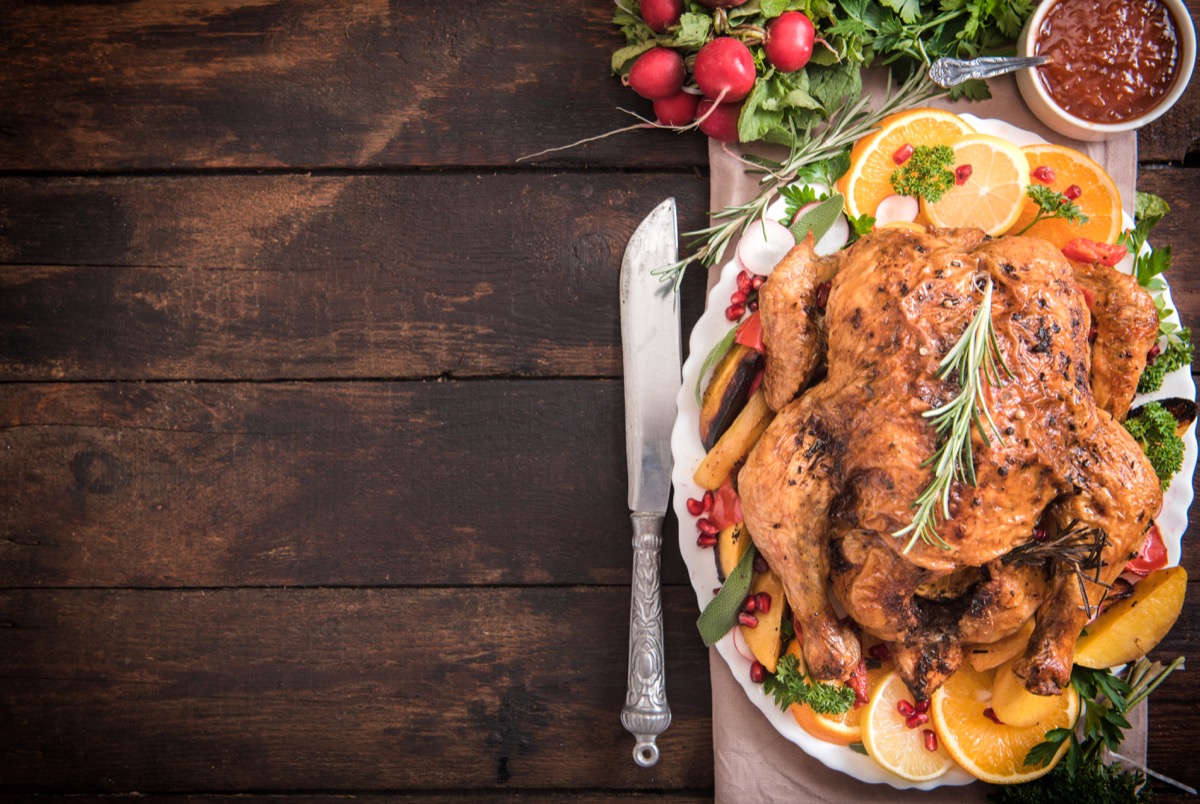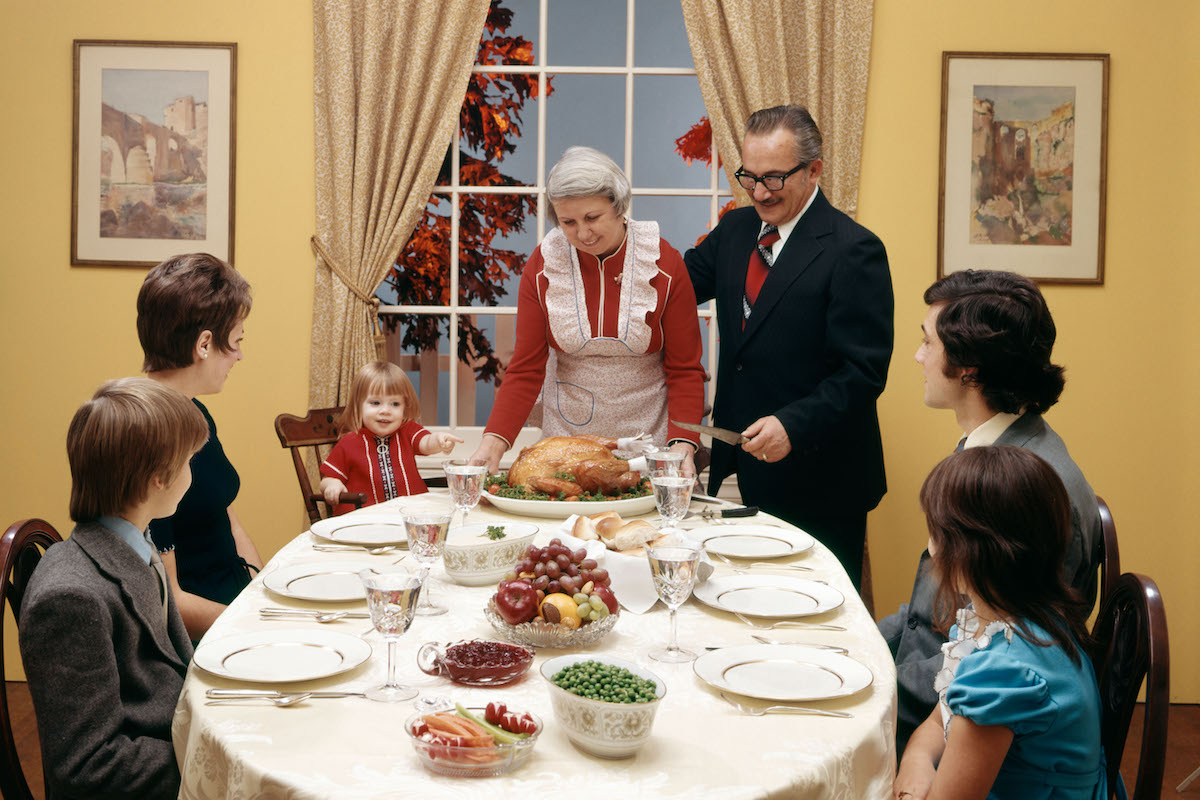Read the original article on Best Life. The pilgrims celebrated Thanksgiving on the fourth Thursday of November, so we celebrate Thanksgiving on the fourth Thursday of November, right? Not exactly. While we don’t know the exact date of the first Thanksgiving, most historians agree that it most likely occurred somewhere between Sept. 21 and Nov. 9. So, definitely not the fourth Thursday of November. And for more on how that tradition started, read up on The Real Reason Thanksgiving Is on the Fourth Thursday of November. Since we celebrate Thanksgiving annually, it’s natural to assume we’ve been gathering for a ritual feast every year since 1621. However, that’s not the case. The first time Thanksgiving was made an official holiday was in 1789, but President George Washington only observed it that year. It wasn’t until 1863 that President Abraham Lincoln issued a proclamation making the last Thursday of November a national holiday. Then, in 1939, President Franklin D. Roosevelt officially moved it to the the third Thursday of November. Two years later, in 1941, Thanksgiving was officially established as a United States federal holiday to be celebrated every year on the fourth Thursday in November, like we know it to be today. If you think the pilgrims were serving up roast turkey and stuffing at their Thanksgiving feast in 1621, you would be sadly mistaken. While historians do agree that wild turkey was a common delicacy at the time, it’s not specifically mentioned in Edward Winslow’s eyewitness account of the first Thanksgiving meal. However, he did recall large amounts of unspecified “fowl” and deer brought by the Native Americans. Turkey wasn’t officially associated with the holiday until the late 1800s. That’s when Sarah Josepha Hale, the editor for the women’s magazine Godey’s Lady’s Book, came across Winslow’s account and published recipes for her modern take on the feast, which included turkey. And for the dishes that haven’t withstood the test of time, find out The Most Hated Thanksgiving Dish, Survey Says While you may picture the pilgrims and Native Americans meeting up for one joint meal, the first Thanksgiving feast wasn’t a one-day event. It was, well, an entire feast. According to Winslow’s firsthand account, the celebration was actually around three days long. While many of us recall learning in school that Native Americans were graciously invited to the Thanksgiving feast by pilgrims, there’s actually no official account that says they were asked to join. According to Indian Country Today, many historians say that the Native Americans happened upon the feast. “Most historians believe what happened was Massasoit (the Pokanoket Wampanoag leader) got word that there was a tremendous amount of gun fire coming from the Pilgrim village,” said Tim Turner, a member of the Cherokee Nation and manager of Plimoth Plantation’s Wampanoag Homesite. “So he thought they were being attacked and he was going to bear aid.” When his tribe showed up, they were allowed to join the pilgrims and Massasoit sent his men out to bring deer back as a contribution to the feast. Because of what followed after Thanksgiving for Native people, many view the day as a time to mourn. “Thanksgiving day is a reminder of the genocide of millions of Native people, the theft of Native lands, and the relentless assault on Native culture,” write the United American Indians of New England. “Participants in National Day of Mourning honor Native ancestors and the struggles of Native peoples to survive today. It is a day of remembrance and spiritual connection as well as a protest of the racism and oppression which Native Americans continue to experience.” And for more on Native history, check out 13 Important Native Americans You Didn’t Learn About in School. This year aside, Thanksgiving is typically a time to gather with our loved ones. But although it’s commonly seen as a “family holiday,” it didn’t start that way at all. In fact, when the first Thanksgiving occurred, it was a mostly male-attended event, as there were only four women left in Plymouth (most had perished soon after the long Mayflower voyage).ae0fcc31ae342fd3a1346ebb1f342fcb Based on the various “first feast” illustrations we saw in our school textbooks growing up, one would assume that pilgrims wore all black and white with buckle accessories. However, buckles weren’t commonplace in fashion until later in the 17th century. And according to Simon Worrall with Smithsonian magazine, pilgrims actually wore “earth tones” like “green, brown, and russet corduroy,” which were common for the English countryside at the time. And for more fun facts and debunkings delivered right to your inbox, sign up for our daily newsletter. While our annual Thanksgiving celebrations are based off the original 1621 American feast, the U.S. is not the only country that celebrates “Thanksgiving.” Other countries that celebrate their own Thanksgivings include Canada, Germany, Liberia, Japan, and the Netherlands. Of course, their celebrations’ origins differ from our own. For instance, Canada celebrates a Thanksgiving based off the 1578 expedition led by Arthur Frobisher, a British navigator who held a feast for his crew as a way to give thanks for the safety of their voyage. And for more information about the U.S. of A you may not realize, here are 23 Basic American History Questions Most Americans Get Wrong.





